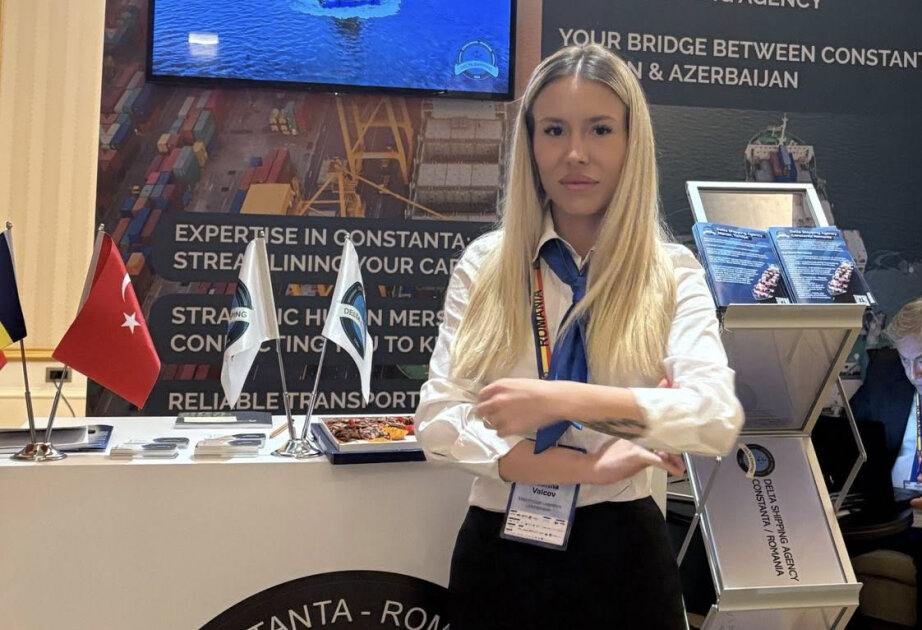1news.media correspondent spoke with Sabrina Valkov, transport and logistics expert and intermodal project coordinator at Delta Shipping Agency, a company providing a full range of logistics services and actively involved in the development of river and sea transport on the Danube and in the Black Sea region, about the practical aspects of this work, the challenges and opportunities of multimodal transport, digitalization, and international cooperation.
-What are the specifics of working with cargo passing through the port of Constanta? What are the main export/import directions?
-Constanta is the largest port on the Black Sea and a key maritime hub for the region. The port's location and infrastructure make it a strategic gateway linking the Danube River to Central and Eastern Europe.
Its deep-water facilities allow it to handle a wide range of cargo, including containers, bulk commodities, oil products, and project cargo. Imports: Machinery, consumer goods, energy resources, and raw materials from Asia, the Middle East, etc. Exports: Agricultural products, fertilizers, manufactured goods, and industrial equipment, mainly directed toward the EU, Türkiye, and Asian markets.
-How do you assess the potential of the Middle Corridor as an alternative to traditional routes through Russia? Do you encounter cargo in your work that goes from Asia to Europe via the Caspian Sea, Azerbaijan, Georgia and Romania?
-The Middle Corridor has significant potential as a resilient and competitive alternative to northern routes. It not only diversifies transport options but also reduces geopolitical risks for shippers.
At Delta Shipping, we already see growing interest in routes that cross the Caspian Sea and connect via Azerbaijan and Georgia to the Black Sea, including Constanta. Although volumes are still developing, the trend is positive, and demand is expected to increase as infrastructure and coordination improve along the corridor.
-What is the role of the port of Constanta in the implementation of the European Union's strategy to develop TITR and reduce dependence on routes through the North?
-Constanta is a natural bridge between the EU and the Caspian region. The port is well integrated into the European transport network and offers direct maritime and inland waterway connections. Within the EU's strategy, Constanta acts as a secure and efficient Black Sea gateway, supporting the diversification of supply chains and reinforcing the resilience of European logistics by providing access to the Middle Corridor.
-How do you assess the development of infrastructure in Azerbaijan in terms of multimodal logistics and transit potential? How well are the logistics chains between Azerbaijan and the Black Sea ports, including Constanta, currently integrated?
-Azerbaijan has invested significantly in modernizing its transport infrastructure: ports, railways, and logistics hubs. The Port of Baku, for example, has become a state-of-the-art facility well-positioned for trans-Caspian flows. Integration with Black Sea ports like Constanta is still evolving, but we see steady progress. Stronger rail-sea connections and harmonized procedures will further unlock this potential.
-Is there any interest from Romanian or European companies to use the route via Azerbaijan for imports from China and Central Asian countries?
-Yes, there is growing interest, especially in the context of supply chain diversification. European companies are increasingly evaluating the Middle Corridor as part of their China–Europe transport strategies. Romanian logistics firms and exporters also recognize Azerbaijan as a strategic transit partner that can shorten lead times compared to maritime-only routes.
-What do you think are the prospects for digitalization of logistics on this route, including single electronic consignment notes, tracking and "green corridors"?
-Digitalization is essential for the Middle Corridor's success. Single electronic consignment notes and integrated cargo-tracking systems will reduce bureaucracy, increase transparency, and build trust among shippers."Green corridors," where customs and border formalities are simplified, would significantly improve competitiveness. There are already pilot initiatives, but wider adoption and interoperability across all corridor countries are necessary.
-What role can joint logistics platforms and alliances between companies from Romania, Azerbaijan, Georgia and Kazakhstan play in strengthening the Middle Corridor?
-Such partnerships are crucial. Joint platforms and alliances can pool resources, standardize services, and create reliable schedules, making the corridor more attractive to global shippers.Collaboration between logistics companies from these countries will also help overcome fragmentation, develop end-to-end solutions, and position the Middle Corridor as a unified, competitive alternative in Eurasian trade.
 Against the backdrop of geopolitical changes and the desire to diversify trade routes, the Middle Corridor (Trans-Caspian International Transport Route, TITR) is increasingly being viewed as a viable alternative to traditional routes through Russia. Its importance is growing for both Central Asian and Caucasian countries, as well as for the European Union. One of the key hubs of this route is the port of Constanta, the largest port on the Black Sea, which plays a vital role in integrating maritime and river transport within Eurasian logistics.
Against the backdrop of geopolitical changes and the desire to diversify trade routes, the Middle Corridor (Trans-Caspian International Transport Route, TITR) is increasingly being viewed as a viable alternative to traditional routes through Russia. Its importance is growing for both Central Asian and Caucasian countries, as well as for the European Union. One of the key hubs of this route is the port of Constanta, the largest port on the Black Sea, which plays a vital role in integrating maritime and river transport within Eurasian logistics.